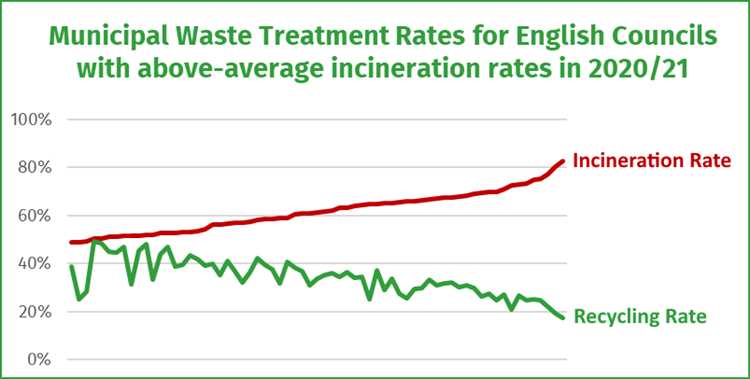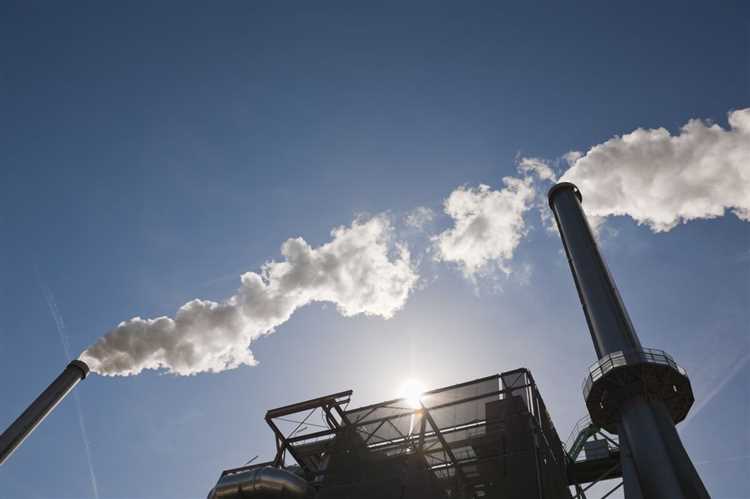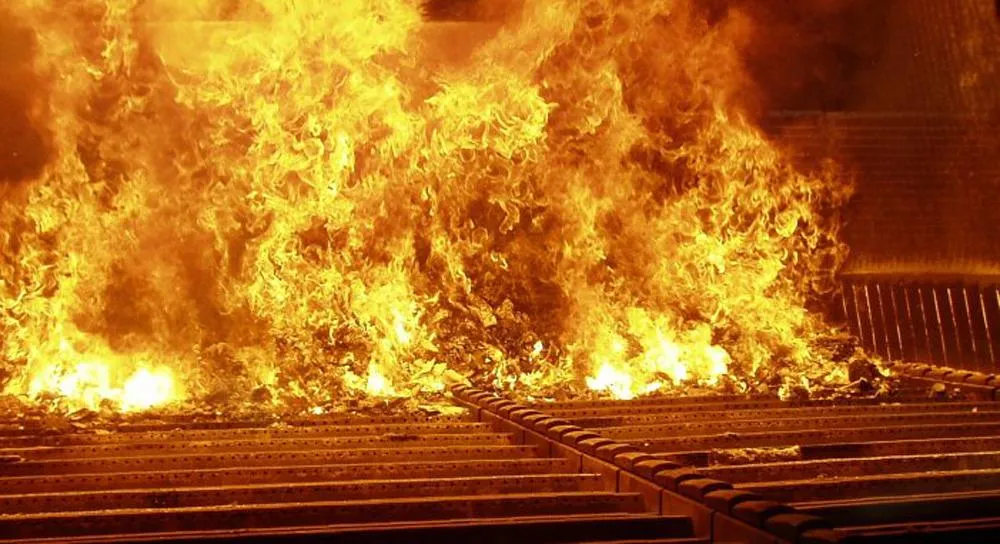
Introduction:
As the global population continues to grow, the issue of waste management has become an increasingly pressing concern. Two common methods of disposal are burning waste and landfill disposal. Both methods have their own advantages and drawbacks, which need to be carefully considered in order to make informed decisions about waste management practices.
Benefits of burning waste:
Burning waste, also known as incineration, offers several benefits. Firstly, it reduces the volume of waste significantly, which can be particularly beneficial in densely populated areas with limited space for landfills. Secondly, the process of burning waste produces energy that can be harnessed and used to generate electricity or heat. This can help reduce reliance on fossil fuels and alleviate pressure on traditional energy sources.
Furthermore, incineration can help to minimize greenhouse gas emissions. When waste decomposes in landfills, it releases methane, a potent greenhouse gas. By burning waste, methane emissions are reduced, thus helping to mitigate climate change. Additionally, burning waste can also help to destroy harmful and toxic substances, preventing them from entering the environment and posing threats to ecosystems and human health.
Drawbacks of burning waste:
Despite its benefits, burning waste also has certain drawbacks that need to be taken into account. One major concern is the release of air pollutants during the incineration process. These pollutants, such as dioxins, furans, and heavy metals, can have detrimental effects on both human health and the environment. Therefore, it is crucial to ensure that proper emission control technologies are in place to minimize these pollutants.
Furthermore, burning waste can be expensive to implement and maintain. Incineration facilities require significant investment in infrastructure and technology, making it a less financially viable option for some communities. Additionally, the process of burning waste produces ash, which needs to be disposed of in a safe and controlled manner to prevent the release of toxins.
Conclusion:
In conclusion, both burning waste and landfill disposal have their own advantages and drawbacks. While burning waste can reduce waste volume, produce energy, and minimize greenhouse gas emissions, it also poses risks in terms of air pollution and requires significant financial investment. On the other hand, landfill disposal may be less expensive, but it can result in methane emissions and take up valuable space. Ultimately, a comprehensive waste management strategy should consider a combination of methods, tailored to the specific needs and circumstances of each community.
- Advantages and Disadvantages of Waste Incineration
- Reduction of waste volume
- Energy generation
- Reduction of greenhouse gas emissions
- Potential for toxic emissions
- High initial costs
- Impact on recycling efforts
- Incentives for recycling
- Education and awareness
- Q&A
- What are the benefits of burning waste?
- Are there any drawbacks to burning waste?
- What are the benefits of landfill disposal?
- What are the drawbacks of landfill disposal?
- Is there a way to mitigate the drawbacks of burning waste?
Advantages and Disadvantages of Waste Incineration

Waste incineration, also known as waste-to-energy, is a process in which waste materials are burned to produce heat and electricity. While this method has its advantages, it also has some drawbacks. Here are some of the main advantages and disadvantages of waste incineration:
Advantages:
- Reduces waste volume: Incineration can greatly reduce the volume of waste that would otherwise go to landfills. This helps to conserve limited landfill space and extend its lifespan.
- Energy generation: Burning waste produces heat, which can be used to generate electricity. This can help to reduce reliance on fossil fuels and contribute to a more sustainable energy mix.
- Reduces greenhouse gas emissions: When compared to landfill disposal, waste incineration typically produces lower levels of greenhouse gas emissions. This can help to mitigate climate change.
- Resource recovery: Incineration can also be used to recover valuable resources from waste, such as metals and minerals, through processes like ash recycling.
- Reduced odour and vermin: Incineration can effectively eliminate odours and reduce the risk of attracting vermin associated with landfill sites.
Disadvantages:
- Air pollution: The burning of waste releases pollutants into the air, including greenhouse gases, heavy metals, and dioxins. These pollutants can have negative impacts on air quality and human health.
- Cost: Building and operating waste incineration facilities can be expensive. This cost is often passed on to taxpayers or reflected in waste disposal fees.
- Dependency on waste supply: Waste incineration facilities require a steady supply of waste to operate efficiently. If waste volumes decrease, it can lead to underutilized facilities or the need to import waste from other areas.
- Potential for toxic ash: The ash produced from waste incineration can contain hazardous substances. Proper ash treatment and disposal are required to prevent contamination and ensure environmental safety.
- Public perception and opposition: Incineration facilities are often met with public opposition due to concerns about pollution, health risks, and the impact on the environment.
In conclusion, waste incineration offers several benefits, such as waste volume reduction and energy generation, but it also comes with disadvantages, including air pollution and cost. It is important to carefully weigh these pros and cons when considering waste management options.
Reduction of waste volume
Burning waste has the advantage of reducing the volume of waste that needs to be disposed of. When waste is burned at high temperatures, it is converted into ash and gases, resulting in a significant reduction in the overall volume. This means that less space is required for waste storage, which is especially beneficial in areas where landfills are scarce or nearing full capacity.
Landfill disposal, on the other hand, does not offer the same level of waste volume reduction. Although landfills can compact and compress waste, the volume remains relatively unchanged. As a result, more physical space is required to accommodate the same amount of waste. This can be a significant disadvantage in densely populated areas where land is limited and expensive.
By choosing to burn waste, communities can effectively manage their waste without the need for large landfills. This not only helps to alleviate the strain on available land but also reduces transportation costs associated with transporting waste to distant landfills. Additionally, the reduced waste volume from burning can result in fewer greenhouse gas emissions, as there is less organic waste decomposing and releasing methane gas into the atmosphere.
However, it is important to note that waste incineration also has its drawbacks, such as air pollution and the release of harmful substances. These issues need to be carefully addressed and mitigated through proper technology and rigorous monitoring to ensure that the benefits of waste volume reduction are not outweighed by the negative environmental impacts.
Overall, the reduction of waste volume is a key benefit of burning waste compared to landfill disposal.
Energy generation
Burning waste as a method of disposal has the advantage of generating energy. When waste is burned, it produces heat and steam, which can be used to generate electricity and heat for homes and businesses. This process, known as waste-to-energy or WtE, helps to reduce the dependency on non-renewable sources, such as coal and oil, for energy generation.
Furthermore, waste-to-energy plants can be designed to capture and utilize the gases produced during the burning process. Methane, a potent greenhouse gas, can be extracted and used as a fuel for energy generation. By capturing and utilizing these gases, we not only reduce their harmful effects on the environment but also maximize the energy output of the waste disposal process.
In addition, waste-to-energy helps in managing the ever-increasing amount of waste generated globally. As the population continues to grow, waste generation continues to rise. By burning waste for energy, we can effectively reduce the volume of waste that needs to be disposed of in landfills. This helps to conserve land resources and reduces the need for new landfill sites.
However, it is important to note that waste-to-energy is not without its drawbacks. The combustion process releases pollutants and emissions, including carbon dioxide and various air pollutants, which can have detrimental effects on air quality and contribute to climate change. Efforts must be made to implement effective emission control technologies in waste-to-energy plants to minimize these impacts.
Overall, while waste-to-energy provides a solution to both waste management and energy generation, its full potential can only be achieved through careful planning, proper emission control measures, and the integration of renewable energy sources into the mix.
Reduction of greenhouse gas emissions

Burning waste for energy has the potential to significantly reduce greenhouse gas emissions. When waste is sent to landfills, it decomposes and produces methane gas, which is a potent greenhouse gas that contributes to climate change. By burning waste in properly designed and operated waste-to-energy facilities, methane emissions can be greatly reduced or even eliminated.
Furthermore, waste-to-energy plants typically use advanced pollution control technologies that can help to further reduce greenhouse gas emissions. These technologies capture and treat emissions from the burning process, ensuring that harmful pollutants are removed before they are released into the atmosphere.
On the other hand, landfill disposal of waste contributes to greenhouse gas emissions. In addition to the methane produced during decomposition, the transportation of waste to landfills also releases carbon dioxide, another significant greenhouse gas, into the atmosphere. Landfills also take up valuable land space, which could instead be used for other purposes, such as agriculture or recreation.
While burning waste for energy can help to reduce greenhouse gas emissions, it is not a perfect solution. The burning process does release carbon dioxide into the atmosphere, although this is generally less than what would be released if the waste were sent to a landfill. Additionally, it is important to ensure that waste-to-energy facilities are properly regulated and monitored to minimize any potential negative environmental impacts.
In conclusion, burning waste for energy offers the potential to significantly reduce greenhouse gas emissions compared to landfill disposal. However, it is important to consider the overall environmental impact of waste-to-energy facilities and implement appropriate measures to ensure that they are operated in a sustainable and responsible manner.
Potential for toxic emissions
Burning waste can result in the release of toxic emissions into the atmosphere. This is a major concern, as these emissions can have severe environmental and health impacts. When waste is burned, it can release harmful gases, such as carbon dioxide, which contributes to climate change. Additionally, burning waste can produce toxic pollutants, such as dioxins and furans, which are known to be carcinogenic and can bioaccumulate in the environment.
Landfill disposal, on the other hand, does not directly release toxic emissions into the atmosphere. However, it can still lead to the production of greenhouse gases, such as methane, which is a potent contributor to climate change. Methane is produced during the decomposition of organic waste in landfills. Although measures can be taken to capture and utilize methane as an energy source, not all landfills have the infrastructure in place to do so.
In terms of potential for toxic emissions, burning waste has a higher risk compared to landfill disposal. The combustion process can release a wide range of pollutants, including heavy metals, volatile organic compounds, and particulate matter. These pollutants can have negative effects on human health, as they can cause respiratory problems, cardiovascular diseases, and even cancer.
Furthermore, the control and regulation of toxic emissions from waste incinerators can be challenging. Even with advanced air pollution control technologies in place, there is still a potential for the release of harmful substances. This raises concerns about the health and safety of communities living near waste incineration facilities.
Overall, the potential for toxic emissions is an important factor to consider when evaluating the benefits and drawbacks of burning waste versus landfill disposal. While landfill disposal may not directly emit toxic gases into the atmosphere, it still contributes to climate change through methane emissions. On the other hand, burning waste can release a wide range of toxic pollutants, posing significant environmental and health risks. Therefore, a comprehensive and integrated approach is needed to effectively manage and reduce these toxic emissions from waste disposal.
High initial costs
Burning waste as a method of disposal can involve high initial costs. The installation and operation of waste incineration plants require significant investments in construction, equipment, and technology. The facilities need to be built to strict environmental and safety regulations, which can increase the overall costs.
Additionally, the process of burning waste requires specialized equipment such as furnaces and air pollution control systems. These systems need to be constantly inspected, maintained, and upgraded, leading to ongoing operational costs. The expenses associated with waste incineration can be a major deterrent in adopting this method of waste disposal.
On the other hand, landfill disposal generally requires lower initial costs compared to waste incineration. Landfills can be established in relatively inexpensive areas and do not require complex construction or extensive technology. However, it is important to note that there are ongoing costs associated with landfill management, such as monitoring and maintaining the landfill to ensure environmental and public health standards are met.
In conclusion, while burning waste might have higher initial costs due to the construction and operation of incineration plants, landfill disposal generally requires lower upfront investments. Both methods, however, come with ongoing costs that need to be considered when evaluating the overall financial feasibility of waste disposal options.
Impact on recycling efforts
Burning waste and landfill disposal both have significant impacts on recycling efforts. One of the main drawbacks of burning waste is that it can discourage people from participating in recycling programs. When people know that their waste will be burned, they may not see the need to separate their recyclables from their general trash. This can lead to a decrease in recycling rates and the loss of valuable resources that could have been reused.
Landfill disposal also has implications for recycling efforts. When waste is sent to landfills, there is a missed opportunity to recover and recycle materials. Many landfills have programs in place to recover recyclable materials, but the process can be expensive and inefficient. Furthermore, the presence of mixed waste in landfills can contaminate recyclable materials, making them unsuitable for recycling. This contamination can make it challenging for recycling facilities to process materials effectively and can reduce the quality of recycled products.
Incentives for recycling
In order to mitigate the negative impact of burning waste and landfill disposal on recycling efforts, it is essential to provide incentives for recycling. Governments and local authorities can offer programs that encourage recycling, such as financial incentives for households and businesses that recycle. These incentives can help offset the costs associated with recycling, making it more appealing for individuals and organizations to participate.
Education and awareness
Additionally, education and awareness play a crucial role in promoting recycling and combatting the negative effects of waste disposal methods. By educating the public about the importance of recycling and the environmental consequences of burning waste and landfill disposal, individuals can be motivated to change their behaviors and actively participate in recycling efforts. Enhancing public awareness can also help address misconceptions surrounding waste disposal methods and highlight the benefits of recycling for sustainability and resource conservation.
Q&A
What are the benefits of burning waste?
Burning waste has several benefits. Firstly, it reduces the volume of waste that needs to be sent to landfills, which helps to conserve valuable landfill space. Additionally, burning waste can generate heat and electricity, which can be used to power homes and businesses. It also reduces greenhouse gas emissions compared to landfill disposal, as the combustion process produces energy that would otherwise be wasted.
Are there any drawbacks to burning waste?
Yes, there are some drawbacks to burning waste. One of the main concerns is air pollution. When waste is burned, it can release harmful pollutants into the air, including greenhouse gases and toxic substances. This can have negative effects on air quality and human health. Another drawback is the cost of building and maintaining waste-to-energy plants, which can be quite high. There are also concerns about the disposal of the ash that is left over after the waste is burned, as it may contain toxic substances.
What are the benefits of landfill disposal?
Landfill disposal also has its benefits. One of the main advantages is its relatively low cost compared to burning waste. Landfills require less infrastructure and technology, making them more affordable to implement. Additionally, landfill sites can also be used for other purposes, such as parks or solar farms, once they are no longer in use. Landfills also provide a way to store waste safely, preventing it from contaminating the environment or causing health hazards.
What are the drawbacks of landfill disposal?
There are several drawbacks to landfill disposal. One of the biggest concerns is the amount of space that landfills occupy. As the population continues to grow and generate more waste, finding suitable locations for landfills becomes more difficult. Landfills can also release harmful gases, such as methane, which is a potent greenhouse gas that contributes to climate change. Additionally, the decomposition of organic waste in landfills can produce leachate, a toxic liquid that can contaminate groundwater and soil if not properly managed.
Is there a way to mitigate the drawbacks of burning waste?
There are some measures that can be taken to mitigate the drawbacks of burning waste. One approach is to use advanced technologies, such as air pollution control systems, to reduce the emissions of harmful pollutants. These technologies can help to minimize the impact of burning waste on air quality and human health. Another strategy is to focus on waste reduction and recycling efforts, which can reduce the amount of waste that needs to be burned. By reducing waste at the source and promoting recycling, the need for waste-to-energy plants can be reduced.